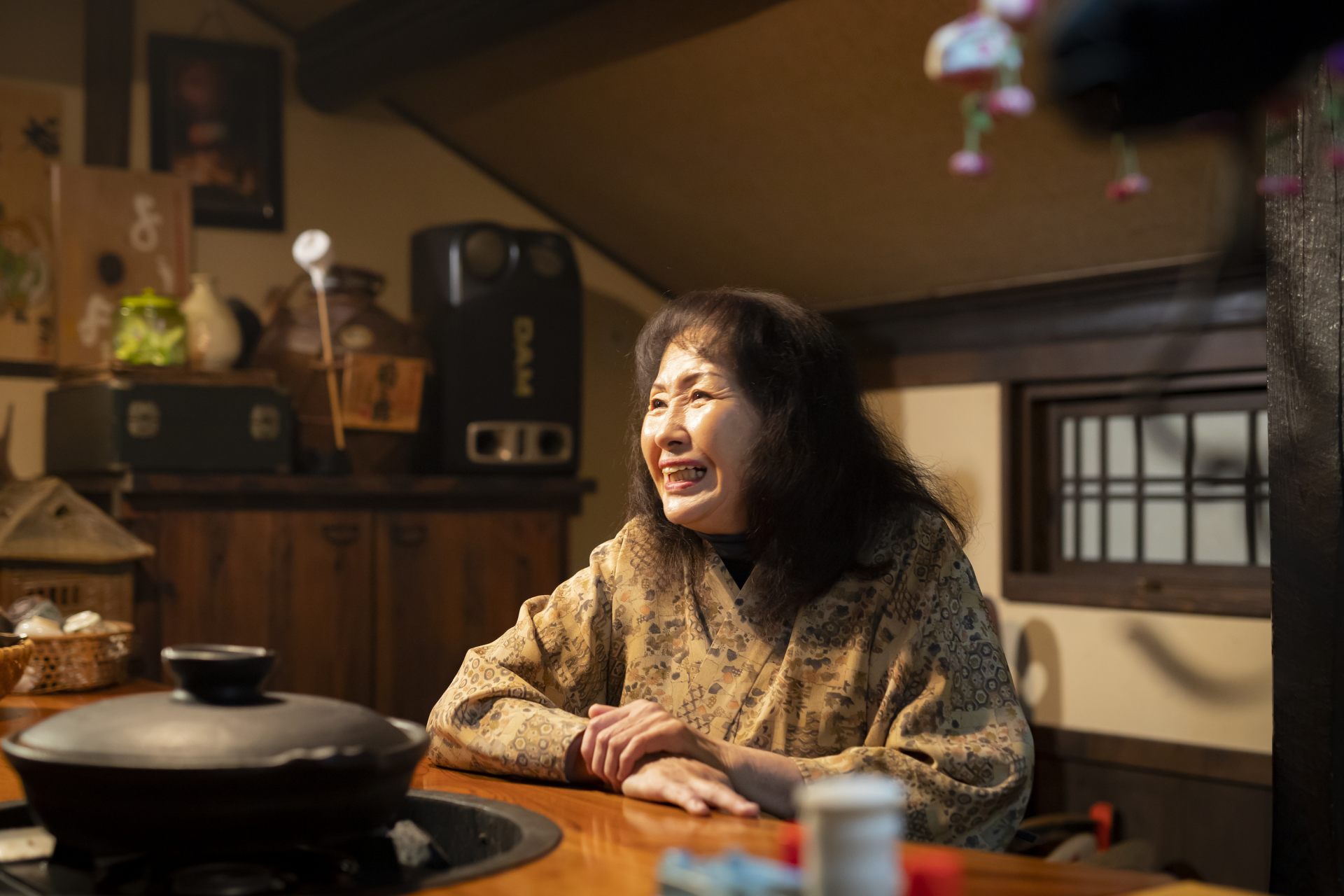
Walk along the oldest road in Japan and learn about the lives and cuisine of the people living amid the unspoiled landscape of Japan.
Katsuragi, which appears in Japan's oldest history book, the Nihon Shoki, is a historical land where the royal family (those in power) ruled and cultivated a rich culture before the creation of the Yamato Imperial Court, which appeared around the 3rd century. "Hishio", the predecessor of soy sauce, was introduced to this area from the Chinese mainland centuries ago, where it developed it into a unique piece of our cuisine. Areas that were well populated with mostly wealthy families were also areas that produced the roots of Japanese cuisine.
See the brewing process of soy sauce in wooden pails, and learn the secrets of fermentation
The first place we visited was Katakami Soy Sauce, a fermentation plant founded in 1931. They are very particular about their natural fermentation methods, and make high-quality, additive-free soy sauce with care. They also give lectures on the process, from fermentation to brewing. When you step into the store, you are enveloped in the scent of soy sauce. Witnessing how the soy sauce is carefully brewed in a natural cedar soy sauce tubs is a must. In addition, there is also a taste comparing event, where you try different kinds of soy sauce with rice cakes and other items. Mr. Katakami is a representative of a research group that reproduces "hishio", the predecessor of soy sauce. You can find their "ancient Hishio", a reproduction of the flavor of the item at the time, on sale here.

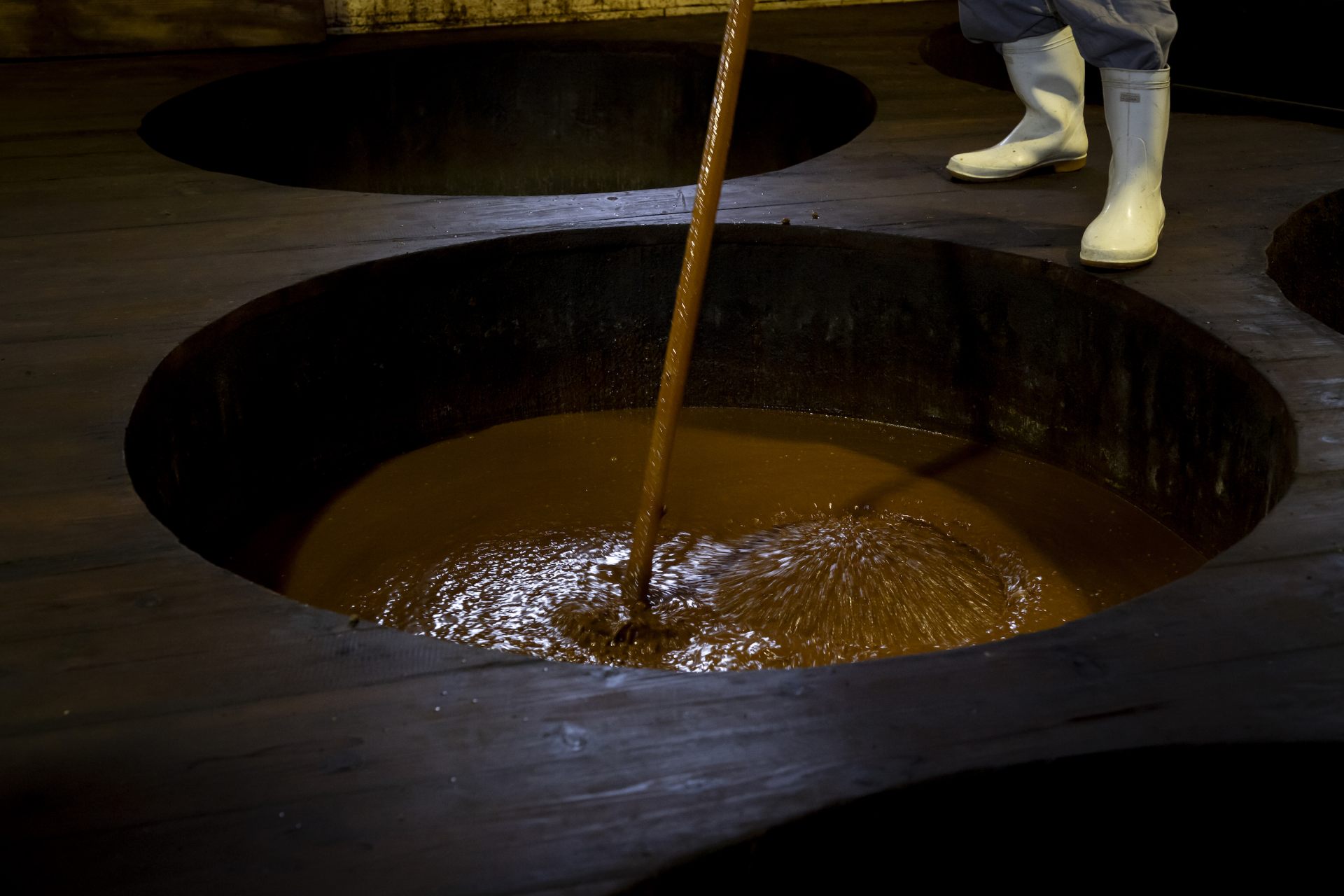
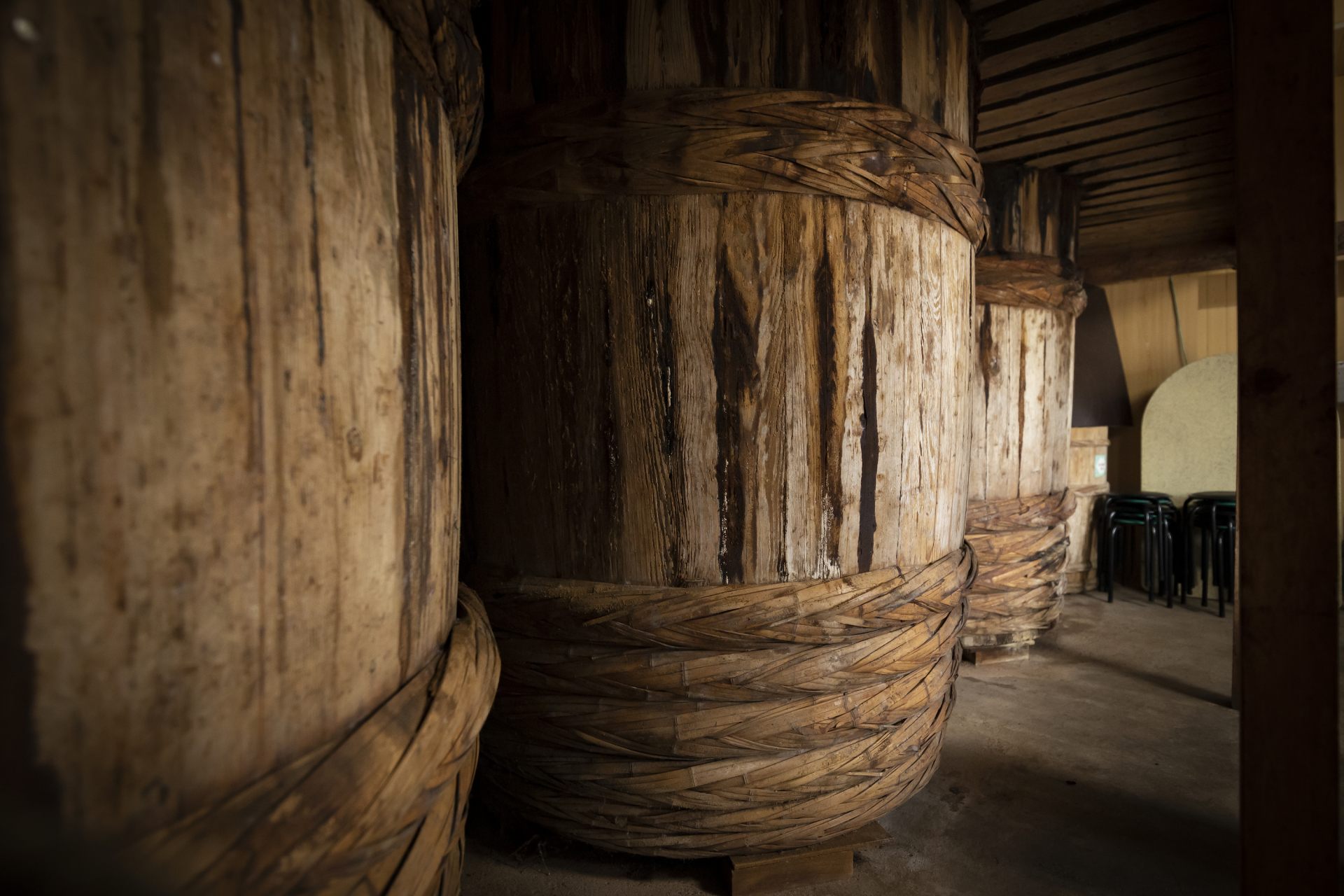
Be amazed at the hospitality of this unique hostess!
Next, we visited the Umemoto Tofu store. With over 100 years since their establishment, they use domestic soybeans and natural bittern to make carefully make tofu using traditional methods to create the flavor that was loved by the imperial court. They are famous for their hostess, and for their wide variety of taste testing samples! You can sample a number of tofu dishes, such as tofu donuts and soy milk drinks, before you make your purchase. Aside from their tofu hamburger, everything is safe for vegetarians to eat. The hostess tells us, "I'm willing to try anything!" She uses her conversations with the regulars to find hints to help create new products.
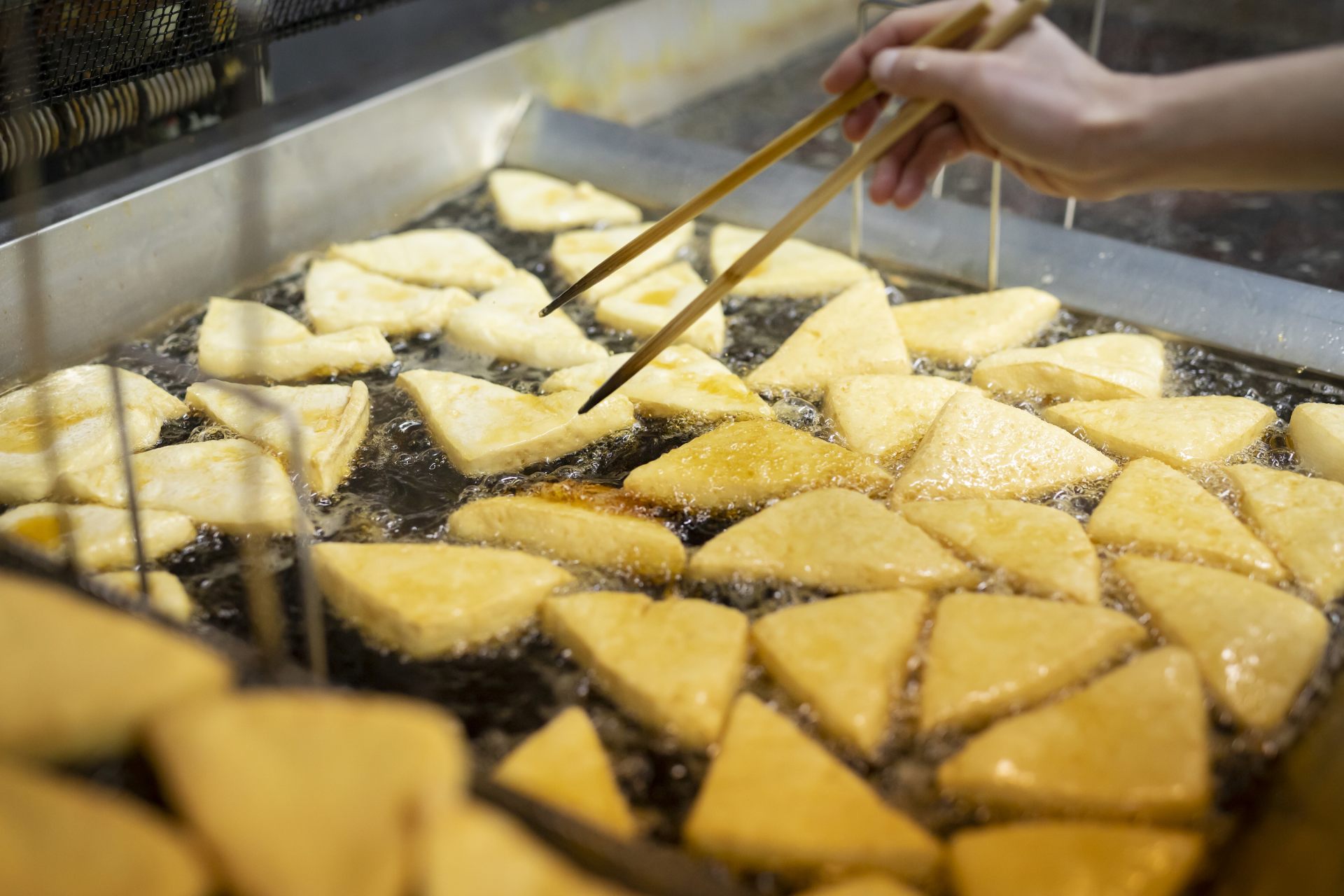
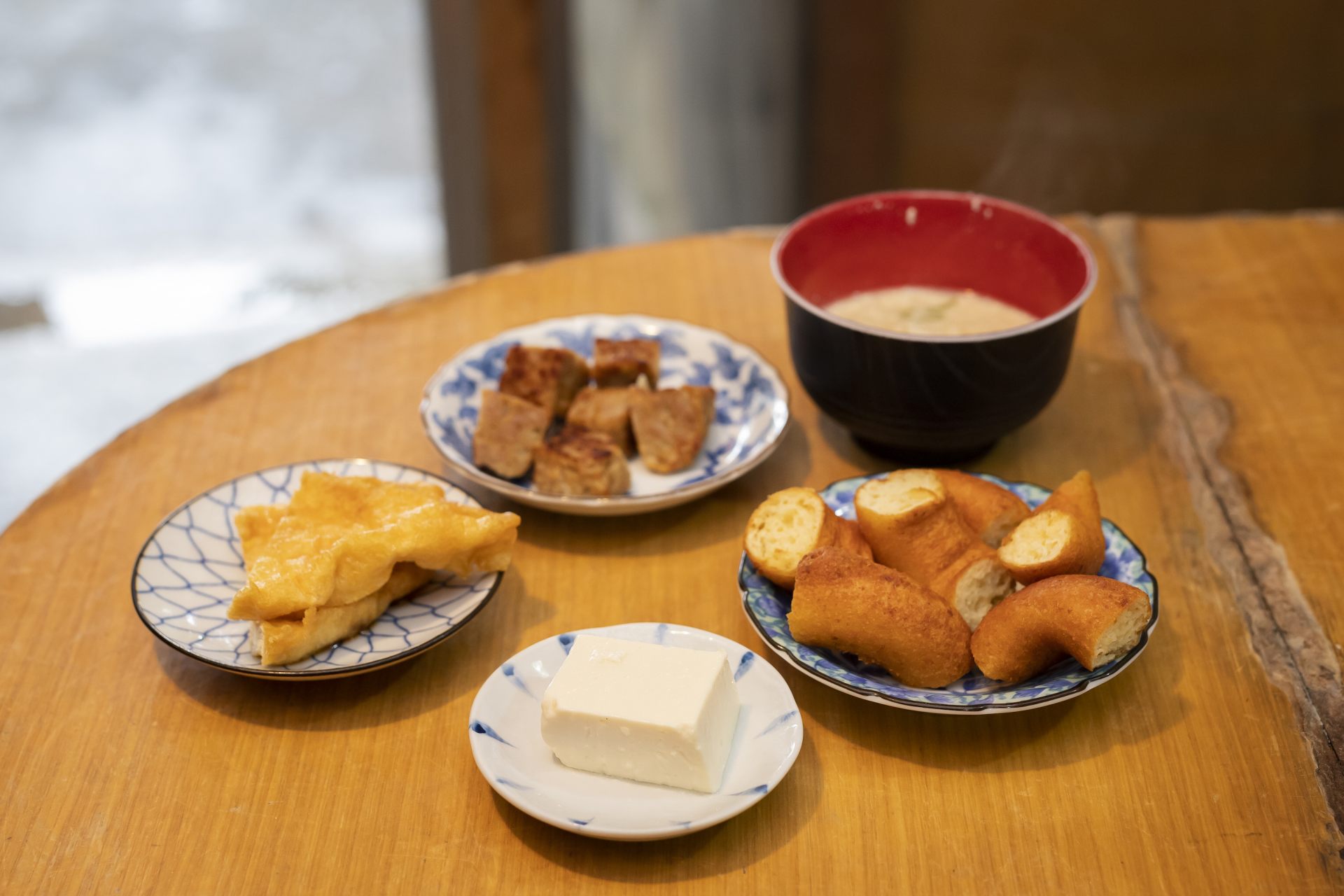

Take a stroll and enjoy the mythical village of Gose City in Katsuragi!
Stroll around the foot of the mountain and enjoy the beautiful and mysterious scenery of the foothills of Katsuragi. You will see the countless ancient shrines and temples scattered throughout the area. Take a break in the nice coffee shop run out of a renovated 100-year-old post office. If you go a little further, you will find restaurants that serve homegrown vegetables and hand-made ham and sausages. Enjoy a gastronomy walk, and delight in the cuisine nurtured by the land and locals.




